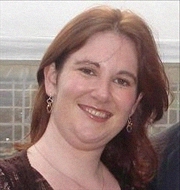Tutor HuntResources Maths Resources
The Mandatory 11+ And Why It Was A Bad Idea
How the Tripartite system of education damaged the educational moral of an entire generation of British learners
Date : 16/05/2016
Author Information

Uploaded by : Kate
Uploaded on : 16/05/2016
Subject : Maths
Britain has an entire generation of adults who believe that they are `stupid` and `crap at maths`. Those attitudes have been handed down through families like ugly heirlooms:
"I was never good at maths"
"You take after me, I could never do that either"
"I failed maths at school, but I still did alright in life"
"Don`t worry too much about your grades in maths, not everyone can do it"
"Maths is just for clever people"
But where did this attitude come from? Why is it so pervasive? And what can we do to tackle it?
__
In 1946, the British government introduced the 11+ exam, which was intended to allocate learners to a secondary school suited to their style of learning. Each educational borough was supposed to provide Grammar Schools (for the academically inclined), Technical Colleges (for the vocationally inclined) and Secondary Modern schools, providing a general education to everyone else.
The problem was, the vast majority of Boroughs did not provide Technical Colleges as intended.
This lead to two things which impacted upon the confidence of an entire generation:
1) The 11+, which was never meant to be a pass/fail exam, was interpreted as such by parents and pupils. Faced with a choice of Grammar/Sec Modern, Grammar was seen as a pass and Sec Modern was seen as a fail.
2) Because the exam focused on mathematics, a `fail` in the 11+ was deemed to indicate that a child was `not bright enough` to understand Mathematics.
Every year for more than 30 years, a large percentage of the population of 11 year olds were told that they had `failed` an exam in Mathematics. A much larger proportion than anyone would assume.
The split of pupils between the schools was supposed to be:
Grammar: 10%
Technical College: 15%
Secondary Modern: 75%
However, with many boroughs not bothering to have Technical Colleges, the total percentage who went to such schools dropped from 15% to just 4%. The remaining 11%, rather than being absorbed by the Grammar Schools, were absorbed by the Secondary Modern schools.
86% of pupils, each year, were added to the Secondary Modern school registers. And every one of them believed that they had failed an exam in maths at the age of 11 years old.
If the Secondary Modern schools had offered a thorough, well taught and comprehensive curriculum, there might have been the opportunity for many of those children to recover their confidence.
But in a system that reigned supreme until 1976, there was no National Curriculum, and no requirement for pupils to be entered for any mandatory exam at the end of their studies at 15/16 years old.
In face, only the top 10% of pupils in the Sec Modern schools were entered for O Level exams.
Another 25% were entered for other exams, such as CSEs, or exams for entry to civil service careers such as the post office or tax office.
That left 65% who were not expected to take a full curriculum of examinations.
In fact, 50% of them were not expected to take any examinations, not a single one. The Education Secretary at the time of this provision model stated that taking external exams at the age of 15 would be `an absurdity` for those children.
When applied to the national population, that means that every year for more than 30 years, 40% of the school leavers nationally left school without taking a single examination since the legally required 11+, which they believed they had failed.
For those that took A-Levels, another battle unfolded.
Until 1985 there was no pass mark for A-Level exams. Instead the results were ranked from top to bottom and split by percentage.
The bottom 20% were given a U - unclassified
The next 20% were awarded D or E grades.
35% were given C grades.
15% were given B grades
The top 10% were given A grades
What this meant was that the bottom score was guaranteed to be a U grade.
Putting this into perspective - if the grades were ranked in order and it was found that the top was 93% while the lowest score was 80%, that score of 80% would be given a U grade.
It seems unthinkable when compared to our current exam system, which rewards work which is accomplished rather than competition against other pupils for a better ranking.
In summary, the following was the case between 1946 and 1976:
- All pupils sat a mandatory maths based examination at the age of 11
- 86% would believe they had failed
- At Secondary Modern schools there was no mandatory curriculum or provision of subjects
- Of those pupils who attended Secondary Modern schools, only the top 10% would be entered for O-Level examinations, along side the Grammar school entrants.
- Out of the O-Level entrants, one in five candidates would receive a U, regardless of their percentage mark. Another 1 in 5 would receive a D or E grade, regardless of their percentage mark.
With all that in mind, it is incredibly sad, but not perhaps that surprising, that such a large portion of our adult population believe that they are `not clever enough to do maths`.
How can we tackle it?
Adult education. Tutoring. Second chances. Fresh perspectives. A total lack of judgement. A massive emphasis on raising confidence and self belief. And a promise to ourselves as a nation that this must never happen again.
This resource was uploaded by: Kate
